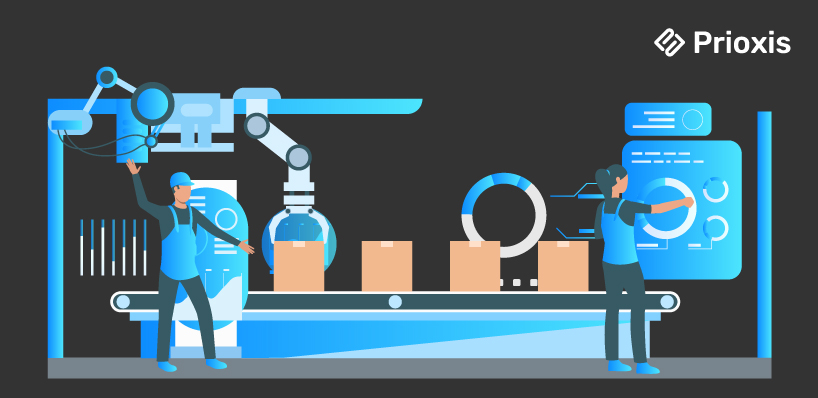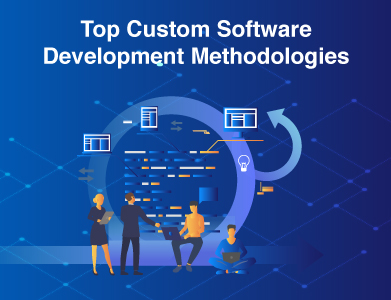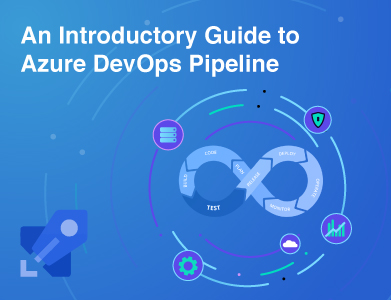Expertise
IT Process Automation (ITPA) represents a transformative approach to managing IT operations by converting manual, repetitive tasks into automated workflows. ITPA combines software tools, artificial intelligence, and machine learning to create intelligent processes that can operate with minimal human intervention.
Modern ITPA is beyond simple task automation. It creates interconnected systems that can make decisions, adapt to changing conditions, and even predict potential issues before they occur. For example, when a server reaches 80% capacity, an ITPA solution can automatically provision additional resources, notify assigned team members, and update documentation – all without manual intervention.
The technology stack typically includes workflow engines, integration platforms, and monitoring tools that work together to create a cohesive automation framework. This framework can handle everything from basic password resets to complex multi-step processes involving multiple departments and systems.
Why Businesses Need IT Process Automation
The necessity for ITPA stems from several critical business challenges that modern organizations face:
Digital Transformation Demands
Digital transformation has resulted in an exponential rise in IT service demands. A mid-sized company typically handles 200–300 IT service requests daily, creating a heavy workload for IT teams.
Manual processing is time-consuming, prone to delays, and introduces errors that disrupt operations. IT teams often struggle to meet these demands without sacrificing service quality.
Inefficient Use of IT Resources
IT teams spend approximately 30% of their time on repetitive, low-value tasks such as password resets or system checks.
This allocation of time leaves little room for strategic projects that drive innovation and long-term growth. For example, a financial services company reported that manual password resets consumed 15 hours per week per IT staff member, limiting their productivity.
Rising Costs of Manual Processes
Manually handling IT workflows has a direct financial impact. Organizations spend an estimated $700–$900 per employee annually on manual IT tasks.
For larger teams, these costs accumulate quickly, creating inefficiencies that hurt the bottom line. For example, a retail company with 500 employees might spend around $420,000 a year on manual IT service desk tasks.
High Risk of Errors and Downtime
Human error in IT processes is a persistent challenge, especially in manual workflows. The cost of downtime caused by these errors averages $5,600 per minute for businesses, significantly impacting revenue and customer satisfaction.
Reducing errors and minimizing downtime is essential to maintain business continuity and protecting brand reputation.
Lack of Standardization Across Locations
For organizations with operations across multiple offices or time zones, inconsistencies in IT processes are a major challenge.
Teams often follow different workflows, leading to delays, inefficiencies, and a lack of unified service delivery that can frustrate end users.
BPA vs. RPA: Understanding the Difference
Both Business Process Automation (BPA) and Robotic Process Automation (RPA) contribute to automation but differ significantly in scope and application.

Business Process Automation (BPA)
BPA focuses on optimizing entire business processes from start to finish. It requires deep integration with existing systems and often involves redesigning workflows for maximum efficiency. For example, in an HR onboarding process, BPA would:
- Coordinate between HR, IT, and facilities departments
- Automatically create necessary accounts across multiple systems
- Generate and route documentation for approval
- Track completion of all onboarding steps
- Provide analytics on the entire process
The implementation of BPA
- Extensive process analysis and redesign
- Integration with core business systems
- Development of custom workflows
- Change management across multiple departments
- Focuses on end-to-end automation of complex workflows.
- Examples: Employee onboarding, financial reporting, or procurement cycles.
Robotic Process Automation (RPA)
RPA acts as a digital worker, mimicking human actions at the user interface level. It excels at handling structured, repetitive tasks without requiring changes to existing systems. A typical RPA implementation might:
- Extract data from emails and enter it into a CRM
- Copy information between different applications
- Generate and distribute regular reports
- Process standard forms and documents
RPA offers distinct advantages
- Rapid implementation (weeks versus months)
- No need for system integration
- Lower initial investment
- Quick wins for specific task automation
- Individual tasks that can be performed without human judgment.
- Examples: Data extraction, invoice processing, or generating daily reports.
Common Misconceptions About IT Process Automation
Adopting ITPA often involves overcoming myths that create hesitancy among decision-makers.
Myth 1: Automation Replaces Human Jobs
Reality Instead of eliminating jobs, automation changes the way we work. It handles repetitive tasks, allowing employees to focus on creative and strategic work that needs human insight. Businesses using automation often experience higher productivity and innovation, creating new roles and opportunities for career growth. For example, IT staff can move from resolving tickets to optimizing infrastructure.
Myth 2: Automation Is Only for Large Enterprises
Reality Scalable tools make automation accessible for businesses of all sizes. For example, a startup can automate email responses, while a multinational corporation might automate global supply chain management.
Myth 3: Automation Is a Set-It-and-Forget Solution
Reality Automation needs regular updates to match evolving business processes and customer needs. Without adjustments, it can become outdated and inefficient. Treat automation as a dynamic tool which needs monitoring, tweaks, and optimization to keep it effective and aligned with your goals.
Benefits of IT Process Automation
1. Faster Task Completion
Automation reduces the time needed to complete workflows from hours to seconds. For example, automated system monitoring can identify and address server anomalies in real-time.
2. Enhanced Accuracy
Manual processes are prone to errors. Automation eliminates mistakes, particularly in data-intensive tasks like financial reporting or compliance documentation.
3. Cost Efficiency
ITPA significantly reduces labor costs by automating routine tasks such as ticket management or patch updates.
4. Scalability
Automation adapts to growing workloads without requiring additional resources, making it ideal for businesses experiencing rapid expansion.
5. Improved Security
Automating cybersecurity measures such as vulnerability assessments or patch applications strengthens overall system defenses.
Use Cases for IT Process Automation
Automation in IT delivers measurable benefits across a range of use cases, transforming how businesses operate. Here we shortlisted use cases which are the most impactful ones:
1. Chatbots and Virtual Assistants
AI-powered chatbots streamline customer service and internal IT processes by handling common queries like resetting passwords or checking system statuses. Using natural language processing (NLP), these bots learn over time to address complex issues, freeing up IT staff for higher-priority tasks.
2. Security and Anomaly Detection
Machine learning-based algorithms continuously monitor network traffic and system logs to detect unusual activities, like unauthorized access. These automated tools flag potential threats and alert IT teams for quick response, improving security and reducing manual monitoring.
3. Predictive Analytics for Proactive Problem-Solving
By analyzing historical data, predictive analytics identifies patterns and potential bottlenecks, enabling IT teams to address issues before they occur. For instance, predicting traffic surges allows proactive resource allocation to prevent downtime.
4. Self-Healing Systems
Self-healing systems detect and resolve issues autonomously, such as restarting services during CPU overloads. These systems minimize downtime, ensuring reliability and reducing the need for constant human intervention.
5. Data-Driven Decision-Making
AI processes IT data to uncover patterns and trends, supporting informed decisions. For example, predictive models can forecast server failures, helping teams allocate resources and schedule maintenance in advance.
6. Automated Reporting
Automation simplifies the creation and distribution of IT reports. Instead of manually gathering data, algorithms compile information into reports, reducing errors and freeing up time for other tasks.
7. Document Scanning and Processing
Using AI, companies can scan and organize large volumes of documents quickly. Optical character recognition (OCR) tools digitize data, while machine learning categorizes and stores it for easy access.
Industries Leveraging IT Process Automation
1. Banking and Finance
- Automated account reconciliation
- Fraud detection systems
- Regulatory reporting
- Customer onboarding
2. Healthcare
- Patient data management
- Insurance claim processing
- Appointment scheduling
- Inventory management
3. Manufacturing
- Quality control processes
- Supply chain optimization
- Predictive maintenance
- Production scheduling
4. Retail
- Real-time stock tracking.
- Order fulfillment automation.
- Personalized customer engagement.
- Dynamic pricing and promotions.
5. IT and Telecommunications
- Incident ticket generation and resolution workflows.
- Automated network performance monitoring.
- Predictive maintenance for IT infrastructure.
- Resource provisioning and optimization.
Step-by-Step Guide to Implementing IT Process Automation
- Audit Your IT Workflows Identify all existing workflows and assess their suitability for automation.
- Set Clear Objectives Define measurable goals, such as reducing ticket resolution times by 30%.
- Choose Automation Tools Select platforms that integrate seamlessly with your current infrastructure.
- Run a Pilot Test the automation on a small scale to identify potential gaps.
- Expand Gradually Scale automation efforts across additional workflows once the pilot proves successful.
- Monitor and Optimize Continuously measure performance and adjust workflows based on metrics.
Tools & Technologies for IT Process Automation
1. AI and Machine Learning (ML)
- TensorFlow Builds algorithms for detecting problems and forecasting trends.
- PyTorch Helps create custom automation models easily.
- Scikit-learn Simplifies tasks like analyzing data and training models.
- AutoML Tools Tools like H20.ai automate model building for tasks like planning and forecasting.
2. Continuous Integration/Continuous Deployment (CI/CD)
- Jenkins Automates app building and deployment.
- GitLab CI/CD Integrates directly into code for seamless updates.
- Travis CI Simplifies setup for testing and deploying apps.
3. DevOps Tools
- Docker Packages apps into containers for easy deployment.
- Ansible Automates routine IT tasks like software updates.
- Kubernetes Manages and scales applications automatically.
- Terraform Simplifies managing and scaling cloud resources.
4. Configuration Management Tools
- Puppet Automates managing IT infrastructure.
- Chef Uses code to describe and maintain system setups.
- SaltStack Excels in automating large, complex systems.
- CFEngine Focuses on keeping systems secure and compliant.
5. Workflow Automation
- ServiceNow Automates IT tasks like handling service requests.
- Zapier Connects and automates actions between apps.
- Microsoft Power Automate Automates workflows within Microsoft products.
- WorkflowMax Manages tasks like reporting and invoicing.
6. Scripting Languages
- Python Flexible and widely used for scripting IT tasks.
- Bash Common for automating Linux-based systems.
- PowerShell Useful for Windows system management.
- Ruby Handles tasks like file and text processing.
7.Enterprise Process Automation
- ServiceNow Streamlines IT service management.
- UiPath Focused on RPA for task-level automation.
- Automation Anywhere Comprehensive solution for enterprise-wide automation.
8.SMB-Friendly IT Process Automation
- Zapier Ideal for connecting apps and automating workflows.
- Ansible Simplifies configuration management.
Emerging Trends in IT Process Automation
These trends are shaping the future of IT automation, allowing businesses to do more with less. Whether it's through AI-driven tools or low-code platforms, automation is becoming more accessible, scalable, and impactful. By adopting these technologies, companies can stay competitive and respond quickly to changing market demands.
1. AI-Powered Automation
Automation tools are increasingly using Artificial Intelligence (AI) to make smarter decisions. Unlike traditional automation that follows pre-set rules, AI-driven automation can learn from data, predict issues, and adapt to new scenarios. This trend is especially popular for tasks like IT service management, cybersecurity threat detection, and predictive maintenance.
2. Hyperautomation
Hyperautomation combines multiple automation technologies, such as robotic process automation (RPA), AI, and machine learning (ML), to automate as many processes as possible. Gartner has identified hyper automation as a key trend, as it allows businesses to streamline complex workflows and scale automation across departments.
3. Integration of DevOps and Automation
IT automation is becoming a critical part of DevOps practices. Automating tasks like software testing, deployment, and infrastructure management helps teams deliver updates faster and with fewer errors. Tools like Jenkins, Ansible, and Kubernetes are driving this trend by simplifying DevOps workflows.
4. Intelligent Chatbots for IT Support
Chatbots are evolving into intelligent virtual assistants that can handle complex IT support tasks. They can troubleshoot issues, reset passwords, and even execute commands, reducing the workload on IT teams and improving response times for employees.
5. Cloud-Native Automation
As businesses move to the cloud, automation tools are being designed specifically for cloud environments with Cloud RPA. Cloud-native automation focuses on managing resources, optimizing costs, and ensuring security across multi-cloud setups. This trend is important for organizations with hybrid or fully cloud-based infrastructures.
6. Focus on Cybersecurity Automation
With the rise in cyber threats, businesses are adopting automation to improve their security posture. Automated systems can monitor networks, identify vulnerabilities, and respond to incidents in real time. This trend is essential for protecting sensitive data and ensuring regulatory compliance.
7. Process Mining and Automation
Process mining tools analyze existing workflows to identify inefficiencies and opportunities for automation. By combining process mining with automation, businesses can improve their operations and prioritize the areas that deliver the most value.
8. Automation with Edge Computing
Edge computing enables automation at the source of data generation. Automating processes at the edge (like IoT devices or local servers) reduces latency and ensures real-time responses, which is essential for industries like manufacturing, healthcare, and logistics.
Conclusion
Despite the belief that IT processes cannot be automated, advancements in technology have proven otherwise. IT automation is not only possible but also highly beneficial. By adopting automation early, businesses can streamline repetitive tasks, enhance decision-making, and improve anomaly detection. These benefits apply to organizations across all industries.
At Prioxis, we specialize in IT consulting services that blend innovative strategies with cutting-edge technology to deliver tailored solutions, including IT process automation. Our experts bring a deep understanding of industry needs and software development to craft services that meet your unique goals.
Get in touch with us today to explore how our expertise can help you achieve your business objectives!
Automate your IT operations. Contact Prioxis today for a tailored ITPA strategy that aligns with your business needs. Let's make automation work for you.











